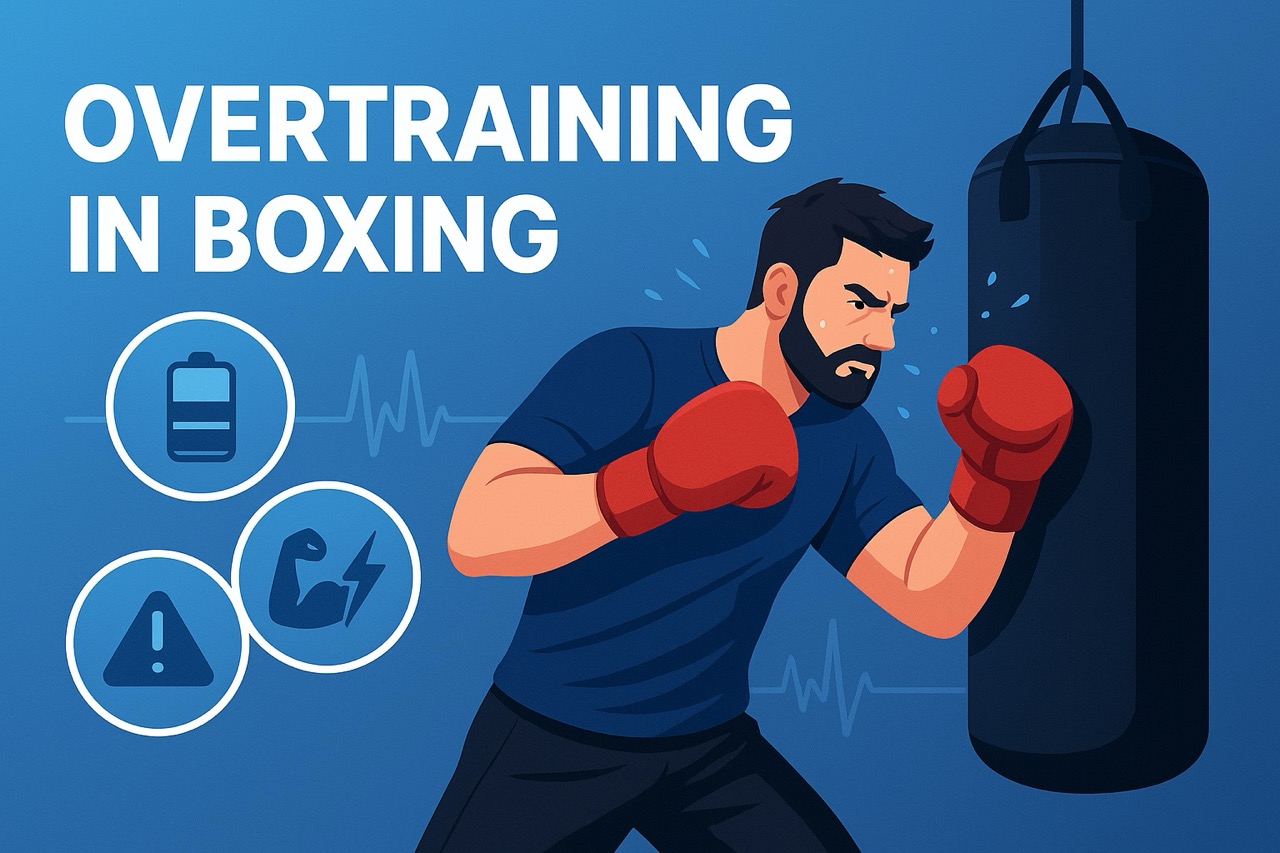Table of Contents
Introduction
Boxing is one of the most intense and rewarding combat sports – but it’s also one of the most physically demanding. From power punches to lightning-fast footwork, every move tests your body’s endurance, balance, and coordination. Unfortunately, the same power that builds champions can also cause injuries if you train the wrong way.
Whether you’re a beginner in Delhi or a competitive boxer in Mumbai, understanding how to prevent boxing injuries is crucial for longevity in the sport. Most injuries – from wrist sprains to shoulder dislocations – are entirely preventable with smart training, correct form, and proper gear.
At FitPunch India, we believe that a strong boxer isn’t just the one who hits harder – it’s the one who trains smarter. Here are the top 10 ways to prevent boxing injuries before they happen, backed by sports science and expert experience.
Why Injury Prevention Matters in Boxing
Boxing injuries are common across all skill levels. The most frequent issues include:
- Hand fractures and wrist sprains from poor punching form.
- Shoulder and elbow injuries from overuse or imbalance.
- Concussions and cuts from improper sparring.
- Knee and ankle strains due to weak stability and bad footwork.
A 2024 sports medicine report revealed that over 65% of boxing injuries occur during training, not during actual fights – meaning most can be prevented. Even elite fighters like Tyson Fury and Mary Kom prioritize prehab (preventive rehab) to stay ring-ready.
Quick Definition:
Injury prevention in boxing means strengthening your body, improving technique, and using protective gear to reduce trauma before it happens.
Top 10 Ways to Prevent Boxing Injuries
1. Warm Up and Stretch Before Every Session
Jumping straight into heavy bag work is one of the biggest mistakes beginners make. Your body needs to gradually prepare for explosive movements.
Try this quick warm-up:
- 3 minutes skipping rope
- Arm swings, hip rotations, shoulder rolls
- Neck stretches and light shadowboxing
A proper warm-up increases joint mobility, muscle temperature, and reflex speed – all of which reduce strain.
⚠️ Tip: 70% of boxing muscle strains occur in the first 10 minutes of unprepared training. Always warm up first.
2. Master Proper Technique with a Qualified Coach
Bad technique is the fastest route to injury. Incorrect punching angles, overextending your elbows, or poor stance can cause micro-tears and long-term pain.
Train under supervision – certified coaches can correct your wrist alignment, guard position, and foot placement. Record yourself shadowboxing and analyze your form weekly.
💬 In India, certified trainers at FitPunch centers provide professional guidance for both amateur and pro-level boxers.
3. Wrap Your Hands Correctly and Use the Right Gloves
Your hands are your weapons – and your most fragile tools. Hand wraps protect your wrists, knuckles, and tendons by absorbing shock.
Follow this golden rule:
“No wrap, no round.”
Use 180-inch wraps for adults and secure them snugly around your knuckles, thumbs, and wrists. Pair them with gloves that match your training type – 12oz for mitt work, 14oz–16oz for sparring.
Avoid cheap gloves with thin padding, which can cause knuckle bruises and fractures.
Explore our FitPunch gear guide to find the best boxing gloves in India.
4. Invest in High-Quality Protective Gear
Boxing isn’t about proving toughness; it’s about protecting longevity.
Essential gear checklist:
- Headgear: For sparring and defensive drills.
- Mouthguard: Prevents tooth and jaw injuries.
- Groin protector: Vital for all male athletes.
- Boxing shoes: Provide stability and traction.
Disinfect your gear after every use – unhygienic gear can cause staph infections and skin issues.
5. Strengthen Your Core, Wrists, and Shoulders
Strong stabilizer muscles reduce joint pressure and prevent sprains. Add these to your weekly routine:
- Planks & side planks for core endurance.
- Resistance band rotations for shoulders.
- Wrist curls & rice bucket training for grip strength.
This “prehab” training helps prevent rotator cuff injuries – one of the most common causes of boxing downtime.
6. Train Smart – Avoid Overtraining and Fatigue
Your body grows during rest, not during punishment. Overtraining leads to muscle fatigue, slower reflexes, and more injuries.
Follow the 80/20 rule – train hard 80% of the time, recover smartly for 20%.
Schedule 1–2 rest days per week and alternate high- and low-intensity workouts.
💬 A tired boxer isn’t a strong boxer – recovery is your secret weapon.
7. Prioritize Recovery, Nutrition, and Hydration
A dehydrated body reacts slower and tires faster.
- Drink electrolyte-rich water before and after sessions.
- Eat balanced meals with lean protein, complex carbs, and omega-3s.
- Try recovery methods like foam rolling, ice baths, and deep-tissue massage.
In hot Indian climates, dehydration can increase injury risk by 30%. Always carry water during training.
8. Focus on Posture, Footwork, and Balance
A boxer’s foundation starts at the feet. Weak posture or clumsy balance leads to ankle twists and power loss.
Fix this with:
- Ladder drills
- Balance board exercises
- Mirror shadowboxing
Correct footwork improves both defense and stability – helping you avoid injuries during intense exchanges.
9. Recognize Pain and Know When to Stop
Learn to distinguish between “good soreness” and “bad pain.”
- Soreness feels dull and fades within 48 hours.
- Pain feels sharp, persistent, and limits motion.
If you notice swelling, numbness, or tingling, stop training immediately and consult a physiotherapist. Ignoring pain can turn a minor sprain into a chronic condition.
FitPunch collaborates with physiotherapy experts across India for safe recovery programs.
10. Schedule Regular Physio and Sports Therapy
Even if you feel fine, regular maintenance therapy prevents hidden problems.
Physiotherapy, cupping, cryotherapy, and massage boost blood flow and reduce inflammation.
Think of it as your body’s tune-up – just like boxers at the elite level do before every fight.
Quick Reference: Top 10 Prevention Tips
| # | Tip | Focus | Indian Relevance |
|---|---|---|---|
| 1 | Warm-up & Stretch | Muscle flexibility | Local gym routines |
| 2 | Correct Technique | Injury-free training | FitPunch coaching |
| 3 | Hand Wraps & Gloves | Wrist & knuckle safety | Indian gear guides |
| 4 | Protective Gear | Head & jaw protection | Affordable Indian brands |
| 5 | Strength Training | Shoulder/core stability | Gym-based routines |
| 6 | Smart Training | Avoid burnout | Weekly rest plans |
| 7 | Recovery & Hydration | Faster healing | Hot weather hydration |
| 8 | Balance & Posture | Ankle & knee safety | Footwork drills India |
| 9 | Recognize Pain | Prevent chronic issues | Local physio support |
| 10 | Sports Therapy | Long-term wellness | FitPunch expert partners |
Tip: Narrow the preview or view on mobile to see the card layout.
Conclusion – Train Smart, Fight Safe
Boxing rewards those who respect their body. Every punch, every movement, and every round depends on preparation – not just passion. By applying these 10 injury prevention strategies, you’ll build strength, protect your body, and extend your boxing journey for years to come.
“Champions aren’t made in the ring; they’re made in the hours spent protecting and preparing their bodies for it.”
Train smart. Fight safe.
Explore more expert guides and boxing resources at FitPunch.in.
FAQs
What are the most common injuries in boxing and how can I prevent them?
Common boxing injuries include hand fractures, shoulder strains, concussions, and cuts. Prevention starts with proper warm-ups, correct punching technique, and quality protective gear. Strength training and rest days also reduce the risk. FitPunch recommends always wrapping your hands and using gloves with enough padding before heavy bag or sparring sessions.
How can beginners avoid injuries while learning boxing?
Beginners should start slow, focusing on correct form and supervised training. Always warm up, stretch, and use hand wraps and mouthguards. Avoid hard sparring in early stages. Gradual conditioning, good hydration, and rest are key to safe progress. FitPunch beginner programs include injury-prevention drills for first-time boxers.
Does shadowboxing help reduce boxing injuries?
Yes. Shadowboxing improves coordination, balance, and form without full contact, helping correct posture and prevent shoulder or wrist injuries. It’s an essential low-impact drill to perfect movement before sparring.
How often should I rest to prevent overtraining injuries in boxing?
Boxers should take at least one or two rest days per week. Rest allows muscles and joints to recover, preventing overuse injuries and fatigue. Overtraining often leads to strains or chronic pain. FitPunch advises following a 5:2 training-to-rest ratio for sustainable performance.
Can poor diet or dehydration increase the risk of boxing injuries?
Absolutely. Dehydration and lack of nutrients weaken muscles and reduce reflexes, increasing the chance of cramps or joint injuries. Drink water regularly, replenish electrolytes, and eat a protein-rich diet. FitPunch nutrition plans for Indian athletes emphasize hydration in hot weather conditions.
What is the correct way to wrap hands to prevent injuries?
Hand wraps should cover the knuckles, wrist, and thumb snugly-without cutting circulation. They stabilize small bones and tendons during impact. FitPunch recommends 180-inch wraps for adults and following a standard “figure-8” method before every session.
How can I strengthen my wrists and shoulders for injury prevention?
Include resistance band exercises, push-ups, and wrist curls in your workout. Shoulder rotations and planks build stability, protecting joints from repetitive strain. FitPunch coaches integrate these into prehab routines to keep fighters injury-free.
What’s the best recovery routine after a boxing session?
Start with light stretching, hydration, and a cool-down walk. Apply ice for soreness and get 7–8 hours of sleep. Include massages or foam rolling weekly to release tension. FitPunch recovery programs focus on mobility and hydration for Indian climate conditions.
Is boxing safe for fitness and cardio training, not fighting?
Yes. Fitness boxing or cardio boxing is generally safe when performed under supervision and with proper gear. It offers cardiovascular benefits, coordination improvement, and stress relief with minimal injury risk. Always warm up and avoid hitting too hard without gloves.




